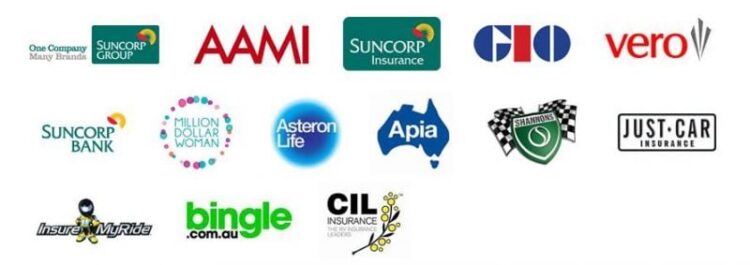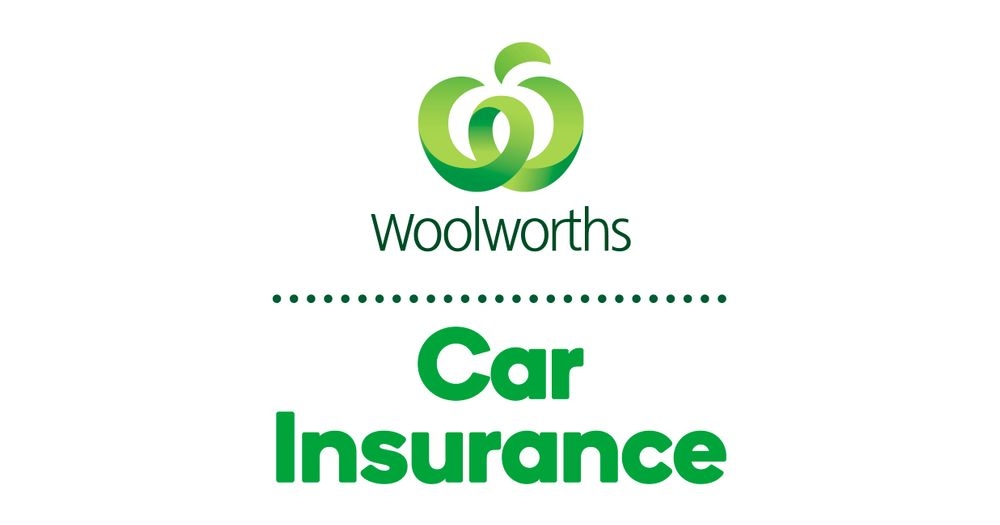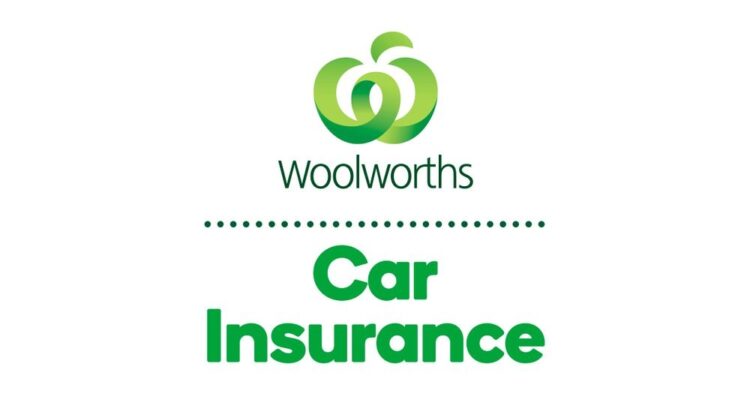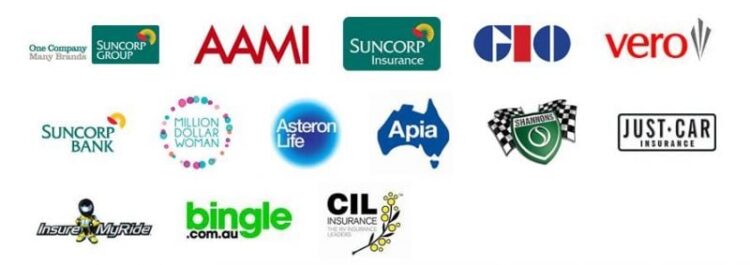
Auto insurance companies in Australia play a vital role in providing financial protection to drivers, ensuring peace of mind in case of accidents or unexpected events. The Australian auto insurance market is dynamic, with a wide range of companies offering various types of coverage to suit different needs and budgets. Understanding the complexities of this market is crucial for making informed decisions and securing the best possible insurance plan.
This guide delves into the Australian auto insurance landscape, providing insights into the types of insurance available, factors influencing premiums, choosing the right provider, and navigating the claims process. We’ll also explore consumer rights and protections, ensuring you’re well-equipped to make informed decisions and secure the best possible coverage for your needs.
Overview of the Australian Auto Insurance Market

The Australian auto insurance market is a significant sector, characterized by a diverse range of products and providers. This market is dynamic, influenced by factors such as economic conditions, technological advancements, and regulatory changes.
Key Trends and Factors Influencing the Market
Several trends and factors are shaping the Australian auto insurance market. These include:
- Rising vehicle values: The increasing cost of new vehicles is driving up the cost of comprehensive insurance, as premiums are based on the value of the insured vehicle.
- Increased claims frequency and severity: This is partly attributed to factors like urbanization, more congested roads, and the increasing prevalence of distracted driving.
- Technological advancements: Telematics and usage-based insurance (UBI) are gaining traction, allowing insurers to offer personalized premiums based on driving behavior.
- Regulatory changes: The Australian Prudential Regulation Authority (APRA) is actively involved in regulating the insurance sector, aiming to enhance consumer protection and promote financial stability.
- Growing competition: The market is becoming increasingly competitive, with new entrants and established players vying for market share. This has led to innovation in product offerings and pricing strategies.
Major Players and Market Share
The Australian auto insurance market is dominated by a few major players. These include:
- Suncorp Group: Suncorp is a leading provider of auto insurance in Australia, with a significant market share. Its brands include AAMI, GIO, and Bingle.
- IAG: IAG is another major player, offering insurance through brands like NRMA, RACV, and CGU.
- QBE: QBE is a global insurer with a strong presence in the Australian market, offering a range of insurance products, including auto insurance.
- Allianz: Allianz is a multinational insurer with a significant market share in Australia. It offers a comprehensive range of insurance products, including auto insurance.
- Other players: The market also includes a number of smaller insurers, such as Budget Direct, RACQ, and SGIC.
Market Segmentation
The Australian auto insurance market can be segmented based on various factors, including:
- Vehicle type: Insurance premiums vary based on the type of vehicle, with higher premiums for luxury and high-performance vehicles.
- Driver demographics: Factors such as age, driving experience, and location can influence premiums.
- Policy type: Auto insurance policies can be segmented into comprehensive, third-party property damage, and third-party fire and theft.
Market Dynamics
The Australian auto insurance market is dynamic, influenced by factors such as:
- Economic conditions: Economic downturns can lead to a decline in insurance premiums, while periods of economic growth can result in higher premiums.
- Natural disasters: Natural disasters such as bushfires and floods can have a significant impact on the insurance industry, leading to increased claims and potentially higher premiums.
- Technological advancements: Technological advancements such as telematics and artificial intelligence are transforming the insurance industry, enabling insurers to offer more personalized and efficient services.
Types of Auto Insurance in Australia: Auto Insurance Companies In Australia

Auto insurance in Australia is a complex landscape, with various types of coverage designed to meet different needs and budgets. Understanding the different types of auto insurance available can help you make an informed decision and choose the right coverage for your situation.
Comprehensive Car Insurance
Comprehensive car insurance provides the most comprehensive coverage, protecting you against a wide range of risks, including:
- Damage to your vehicle: This includes damage caused by accidents, theft, fire, vandalism, natural disasters, and other perils.
- Third-party liability: This covers you if you cause damage to another person’s property or injure someone in an accident.
- Loss of use: This covers the cost of renting a car while your vehicle is being repaired or replaced.
- Personal belongings: This covers items stolen from your vehicle, such as your phone or laptop.
Comprehensive car insurance is generally the most expensive type of auto insurance, but it offers the highest level of protection.
Third-Party Property Damage (TPPD)
TPPD insurance provides coverage for damage to another person’s property, but not for damage to your own vehicle. This type of insurance is mandatory in Australia, and it’s the minimum level of coverage required by law. It is significantly cheaper than comprehensive insurance, but it doesn’t offer protection for your own vehicle.
TPPD insurance is also known as “third-party property” or “third-party fire and theft” insurance.
Third-Party Property Damage, Fire, and Theft (TPF&T)
TPF&T insurance offers additional coverage compared to TPPD, providing protection for your vehicle against fire and theft, but not for damage caused by accidents. It is a more comprehensive option than TPPD, but it doesn’t offer the same level of protection as comprehensive insurance.
Third-Party Only (TPO)
TPO insurance is the most basic type of auto insurance available in Australia. It only covers you for liability to third parties, meaning it protects you if you cause damage to another person’s property or injure someone in an accident. TPO insurance doesn’t cover any damage to your own vehicle.
TPO insurance is also known as “third-party” insurance.
Other Types of Auto Insurance
In addition to the main types of auto insurance, there are other types of coverage that can be added to your policy, such as:
- Excess waiver: This covers your excess, which is the amount you pay out of pocket in the event of a claim.
- New for old: This covers the cost of replacing your vehicle with a new one, even if it’s older than the standard replacement period.
- Windscreen cover: This covers the cost of repairing or replacing your windscreen.
- Towing and roadside assistance: This covers the cost of towing your vehicle if it breaks down or is involved in an accident.
Factors to Consider When Choosing Auto Insurance
Several factors influence the type of auto insurance you choose, including:
- Your budget: The cost of auto insurance can vary significantly depending on the type of coverage you choose. Consider your budget and choose a policy that fits your financial situation.
- Your driving history: If you have a good driving record, you may qualify for lower premiums. However, if you have a history of accidents or traffic violations, you may pay higher premiums.
- The value of your vehicle: The value of your vehicle affects the cost of your insurance. The more expensive your vehicle, the higher your premiums will likely be.
- Your location: The risk of accidents and theft varies depending on your location. If you live in a high-risk area, you may pay higher premiums.
- Your driving habits: Your driving habits can also affect your premiums. If you drive a lot or frequently drive in high-risk areas, you may pay higher premiums.
Choosing the Right Auto Insurance
It’s crucial to compare different quotes from various insurance companies to find the best deal. Consider your individual needs and circumstances when choosing a policy. You can use online comparison websites to compare quotes from different insurers. It’s also essential to read the policy documents carefully to understand the coverage and exclusions before making a decision.
Factors Affecting Auto Insurance Premiums
Auto insurance premiums in Australia are determined by a variety of factors, with some being more significant than others. Understanding these factors can help you make informed decisions about your insurance coverage and potentially reduce your premiums.
Vehicle Type, Auto insurance companies in australia
The type of vehicle you drive is a significant factor in determining your auto insurance premium. Insurance companies assess the risk associated with different vehicles based on factors such as:
- Value: More expensive vehicles, especially those with higher resale values, tend to have higher premiums. This is because the insurer faces a greater financial risk in case of an accident.
- Safety Features: Vehicles equipped with advanced safety features like anti-lock brakes, airbags, and electronic stability control are generally considered safer. These features can reduce the severity of accidents and potentially lower premiums.
- Repair Costs: Vehicles with complex or expensive parts, like luxury cars or those with imported components, often have higher repair costs. This translates to higher premiums for the insurer.
- Theft Risk: Certain vehicle models are more prone to theft than others. Insurers factor in this risk by adjusting premiums accordingly.
Driving History
Your driving history is another crucial factor that influences your auto insurance premium. Insurance companies carefully review your driving record to assess your risk profile.
- Accidents: Having a history of accidents, particularly at-fault accidents, will significantly increase your premiums. This is because you are statistically more likely to be involved in another accident.
- Traffic Violations: Receiving traffic violations like speeding tickets or driving under the influence (DUI) can also result in higher premiums. These violations demonstrate a disregard for traffic laws and potentially higher risk-taking behavior.
- Claims History: Even if you haven’t been at fault in an accident, filing claims for minor incidents can still affect your premiums. Insurers track claim frequency and consider it a reflection of your driving habits.
Age
Age plays a significant role in determining auto insurance premiums. Younger drivers, especially those under 25, generally face higher premiums due to:
- Lack of Experience: Inexperienced drivers are statistically more likely to be involved in accidents, leading to higher risk for insurers.
- Risk-Taking Behavior: Younger drivers may engage in riskier driving habits, such as speeding or driving under the influence, contributing to higher premiums.
However, as drivers gain experience and age, their premiums tend to decrease. Older drivers, over 65, may also face higher premiums due to potential health concerns that could affect their driving ability.
Location
Your location, specifically the area where you reside, can impact your auto insurance premiums. Insurance companies consider factors like:
- Traffic Density: Areas with high traffic density tend to have more accidents, increasing the risk for insurers.
- Crime Rates: Regions with higher crime rates, including vehicle theft, can result in higher premiums.
- Weather Conditions: Locations with extreme weather conditions, such as heavy snow or frequent hailstorms, can lead to increased accident risks and higher premiums.
Choosing the Right Auto Insurance Provider
Finding the right auto insurance provider in Australia can feel overwhelming with so many options available. It’s crucial to understand your needs and compare different providers to find the best fit for your situation. This guide will help you navigate the process and make an informed decision.
Comparing Auto Insurance Providers
To make a well-informed choice, it’s essential to compare different auto insurance providers. This involves considering factors like price, coverage, and customer service. Here’s a breakdown of key features and pricing across different providers:
| Provider | Price | Coverage | Customer Service |
|---|---|---|---|
| AAMI | Competitive pricing with discounts available | Comprehensive, third-party, fire & theft | Good customer service ratings |
| NRMA | Mid-range pricing, discounts for members | Comprehensive, third-party, fire & theft | High customer service ratings |
| RACQ | Competitive pricing, discounts for members | Comprehensive, third-party, fire & theft | Good customer service ratings |
| Suncorp | Competitive pricing with discounts available | Comprehensive, third-party, fire & theft | Average customer service ratings |
| Allianz | Higher-end pricing, discounts for specific groups | Comprehensive, third-party, fire & theft | Good customer service ratings |
Factors to Consider When Choosing an Auto Insurance Provider
Choosing the right auto insurance provider requires careful consideration of various factors. These factors can significantly influence your decision and ensure you select a provider that aligns with your needs and preferences.
- Price: Compare quotes from different providers to find the most affordable option without compromising on coverage. Consider factors like discounts and add-ons that can affect the final price.
- Coverage: Determine the level of coverage you need based on your vehicle, driving habits, and financial situation. Comprehensive coverage protects against various risks, while third-party insurance provides basic liability coverage.
- Customer Service: Research the provider’s reputation for customer service and responsiveness. Consider factors like claim processing time, communication, and overall customer satisfaction.
- Reputation: Check the provider’s financial stability and track record of claims payouts. Look for providers with a strong reputation for fair and transparent practices.
- Add-ons: Evaluate the availability of optional add-ons like roadside assistance, new car replacement, and excess reduction. These can enhance your coverage and provide additional peace of mind.
Tips for Finding the Best Auto Insurance Provider
Finding the right auto insurance provider involves research, comparison, and careful consideration. Here are some tips to guide your search:
- Use Comparison Websites: Online comparison websites allow you to quickly compare quotes from multiple providers, making it easier to find the best deal.
- Read Reviews: Explore customer reviews and ratings to gain insights into the provider’s reputation for customer service and claim handling.
- Ask for Recommendations: Seek recommendations from friends, family, or colleagues who have experience with different auto insurance providers.
- Contact Providers Directly: Reach out to shortlisted providers to ask specific questions and discuss your needs in detail.
- Negotiate: Don’t hesitate to negotiate with providers for better pricing or coverage. Highlight your driving history, safety features, and any other factors that might qualify you for discounts.
Making a Claim
Making a claim with your auto insurance provider is a crucial step in the event of an accident or damage to your vehicle. It’s important to understand the process and follow the necessary steps to ensure a smooth and successful claim resolution.
The Claim Process
The process for making an auto insurance claim in Australia generally involves the following steps:
- Contact your insurer: Immediately after an accident, contact your insurance provider to report the incident. This is typically done through their phone line or online portal.
- Provide details: You’ll need to provide essential information about the accident, including the date, time, location, and details of any other parties involved.
- File a claim: Your insurer will guide you through the process of filing a formal claim. This may involve completing an online form or providing documentation.
- Investigation: The insurer will investigate the claim to verify the details and assess the damage. This may involve contacting witnesses, reviewing police reports, or arranging for a vehicle inspection.
- Assessment and settlement: Once the investigation is complete, the insurer will assess the damage and determine the amount of compensation you’re entitled to. They will then negotiate a settlement with you.
- Payment: Once you agree to the settlement, the insurer will pay you the agreed amount, either directly to you or to the repair shop.
Documenting the Claim
Proper documentation is essential for a successful claim. Here are some tips:
- Take photographs: Capture images of the damage to your vehicle, the accident scene, and any injuries sustained.
- Gather contact information: Collect the names, addresses, and contact details of any other parties involved, including witnesses.
- Report the accident to the police: If the accident involved an injury or significant damage, report it to the police and obtain a copy of the accident report.
- Keep all receipts: Save any receipts related to the accident, including medical expenses, towing costs, and repair bills.
- Keep a detailed record: Maintain a log of all communications with your insurer, including dates, times, and details of any conversations.
Challenges and Considerations
The claim process can sometimes be challenging. Here are some potential issues to be aware of:
- Delay in processing: Claims can take time to process, especially if there are complex investigations or disputes.
- Negotiation: The insurer may not offer the full amount of compensation you feel you deserve. You may need to negotiate to reach a fair settlement.
- Exclusions and limitations: Your policy may have certain exclusions or limitations that could affect your claim.
- Fraudulent claims: Be aware of the potential for fraudulent claims, and ensure you are providing accurate information to your insurer.
Consumer Rights and Protections

In Australia, consumers have a range of rights and protections when it comes to auto insurance. These rights are designed to ensure fair treatment, transparency, and access to information, empowering you to make informed decisions and seek redress if necessary.
Australian Financial Complaints Authority (AFCA)
The Australian Financial Complaints Authority (AFCA) is an independent body that resolves disputes between consumers and financial service providers, including insurance companies.
AFCA plays a crucial role in protecting consumer rights by:
- Providing free and impartial dispute resolution services.
- Helping consumers understand their rights and obligations.
- Investigating complaints and making recommendations for resolution.
- Enforcing industry standards and promoting fair and ethical conduct.
Outcome Summary
Navigating the world of auto insurance in Australia can seem daunting, but with the right information and understanding, you can find the perfect coverage to meet your needs. By carefully considering the factors discussed in this guide, you can make informed decisions about your auto insurance, ensuring peace of mind on the road and financial protection in case of unforeseen circumstances.
Commonly Asked Questions
What is compulsory third party (CTP) insurance?
CTP insurance is a mandatory insurance policy that covers injuries to other people in an accident, regardless of who is at fault. It’s required for all registered vehicles in Australia.
How do I compare different auto insurance quotes?
You can use online comparison websites or contact insurance providers directly to obtain quotes. Be sure to compare the coverage provided, premiums, and any additional benefits offered.
What are the common exclusions in auto insurance policies?
Exclusions vary depending on the policy, but common examples include intentional damage, driving under the influence, and using the vehicle for commercial purposes.
What should I do if I’m involved in an accident?
Stay calm, prioritize safety, and contact emergency services if necessary. Exchange details with other parties involved and document the accident with photos and videos. Report the accident to your insurer as soon as possible.

